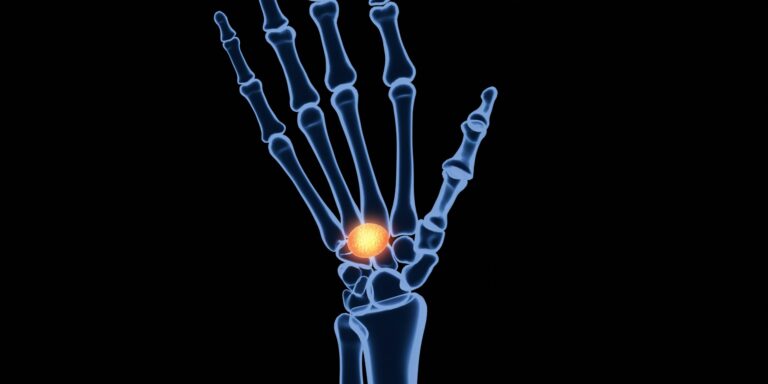The 2022 FIFA World Cup in Qatar marked a groundbreaking moment in the field of sports medicine with the introduction of artificial intelligence (AI) and advanced imaging technologies to enhance player safety, performance, and recovery. For the first time in World Cup history, a centralized medical facility integrated AI-driven diagnostics to monitor and manage player injuries in real-time, setting a new standard for how injuries are assessed and treated at the highest levels of professional sports.
Throughout the month-long tournament, the centralized medical facility conducted over 143 radiological examinations across 94 athletes, utilizing cutting-edge medical technology to assess and diagnose injuries. A majority of these assessments, approximately 67%, relied on MRI imaging, which was paired with AI algorithms capable of analyzing the images to detect injuries ranging from muscle tears and ligament sprains to cartilage damage. The AI systems processed these images in record time, offering medical professionals a swift and accurate diagnosis that enabled immediate and effective treatment plans.
The use of AI-driven diagnostics allowed medical teams to not only identify injuries with greater precision but also predict the likelihood of future injuries. By analyzing vast amounts of data, including players’ biomechanics, their injury history, and their workload, AI systems were able to assess players’ injury risks in real-time. This predictive capability allowed for personalized training and recovery regimens, reducing the risk of re-injury and optimizing players’ performance throughout the tournament. With the fast pace and physical demands of the World Cup, such technology proved to be a game-changer in minimizing player downtime and ensuring they were in peak physical condition.
AI’s integration into the World Cup’s medical protocols also fostered a more cohesive and uniform approach to injury management across all participating teams. The centralized medical model ensured that all teams, regardless of their medical staff’s resources or expertise, received the same high standard of care. This consistency in injury assessments allowed for streamlined communication between medical professionals and coaching staff, facilitating quicker decision-making and more effective treatment plans. Coaches and team physicians were able to rely on the same diagnostic tools, which greatly improved the coordination of player care and recovery strategies.
One of the key advancements highlighted by the World Cup was AI’s ability to enable a more proactive approach to injury prevention. By analyzing a player’s biomechanics and workload data, AI-powered systems could predict when a player was at risk of injury, giving medical teams the chance to intervene before the injury occurred. This preventive care model helped reduce the occurrence of injuries and minimized the disruption to teams’ lineups during crucial matches.
The AI systems used in Qatar were not only able to diagnose existing injuries but also provide valuable insights into players’ overall physical condition, allowing for better monitoring of fatigue levels and recovery. This aspect of the technology was particularly valuable during the intense match schedule of the World Cup, where players’ endurance and fitness were constantly tested. The combination of AI diagnostics and real-time feedback from wearable sensors helped coaches and medical teams fine-tune their strategies for player care, leading to better outcomes both in terms of injury prevention and performance enhancement.
Beyond the World Cup, the success of AI-powered diagnostics has far-reaching implications for the future of sports medicine. The use of AI to analyze imaging data, predict injury risks, and optimize player care represents a major leap forward in the treatment and prevention of injuries in high-performance sports. The collaboration between human expertise and AI technology has shown how artificial intelligence can work hand-in-hand with medical professionals to improve the well-being of athletes, not only in terms of recovering from injuries but also in enhancing their longevity and performance.
The technological advancements seen in Qatar serve as a proof of concept for what’s possible in sports medicine. The potential applications for AI in injury prevention and management extend far beyond football, with the technology likely to become an integral part of medical protocols in other sports as well. From tennis and basketball to rugby and athletics, the ability to predict and prevent injuries will become increasingly important as athletes push the boundaries of physical performance. As AI systems continue to evolve, their role in sports medicine will likely expand, offering even more advanced tools for injury detection, rehabilitation, and performance optimization.
The success of the AI-powered injury diagnostics at the 2022 FIFA World Cup is a clear indicator of the future of athlete care. The ability to quickly diagnose injuries, predict risks, and optimize recovery is a critical step in ensuring the safety and performance of athletes. As AI technology continues to advance, the possibilities for improving player safety and enhancing athletic performance are virtually limitless, and the 2022 World Cup has undoubtedly set a new benchmark for the integration of technology in sports medicine.
This pioneering effort at the 2022 World Cup has reshaped how injuries are handled in elite sports, and the future of AI in sports medicine looks incredibly promising, with the potential to revolutionize athlete care and performance management globally.



